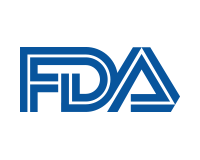United States Department of Health and Human Services

United States Food and Drug Administration: Publications
Date of this Version
2017
Document Type
Article
Citation
Drug Test. Analysis 2017, 9, 905–915.
Abstract
Oral fluid (OF) is an important matrix for monitoring drugs. Smoking cannabis is common, but vaporization and edible consumption also are popular. OF pharmacokinetics are available for controlled smoked cannabis, but few data exist for vaporized and oral routes. Frequent and occasional cannabis smokers were recruited as participants for four dosing sessions including one active (6.9% Δ9-tetrahydrocannabinol, THC) or placebo cannabis-containing brownie, followed by one active or placebo cigarette, or one active or placebo vaporized cannabis dose. Only one active dose was administered per session. OF was collected before and up to 54 (occasional) or 72 (frequent) h after dosing from cannabis smokers. THC, 11-hydroxy-THC (11-OH-THC), 11-nor-9- carboxy-THC (THCCOOH), tetrahydrocannabivarin (THCV), cannabidiol (CBD), and cannabigerol (CBG) were quantified by liquid chromatography-tandem mass spectrometry. OF cannabinoid Cmax occurred during or immediately after cannabis consumption due to oral mucosa contamination. Significantly greater THC Cmax and significantly later THCV, CBD, and CBG tlast were observed after smoked and vaporized cannabis compared to oral cannabis in frequent smokers only. No significant differences in THC, 11- OH-THC, THCV, CBD, or CBG tmax between routes were observed for either group. For occasional smokers, more 11-OH-THC and THCCOOH-positive specimens were observed after oral dosing than after inhaled routes, increasing % positive cannabinoid results and widening metabolite detection windows after oral cannabis consumption. Utilizing 0.3 μg/L THCV and CBG cut-offs resulted in detection windows indicative of recent cannabis intake. OF pharmacokinetics after high potency CBD cannabis are not yet available precluding its use currently as a marker of recent use.
Included in
Dietetics and Clinical Nutrition Commons, Health and Medical Administration Commons, Health Services Administration Commons, Pharmaceutical Preparations Commons, Pharmacy Administration, Policy and Regulation Commons


Comments
U.S. government work.